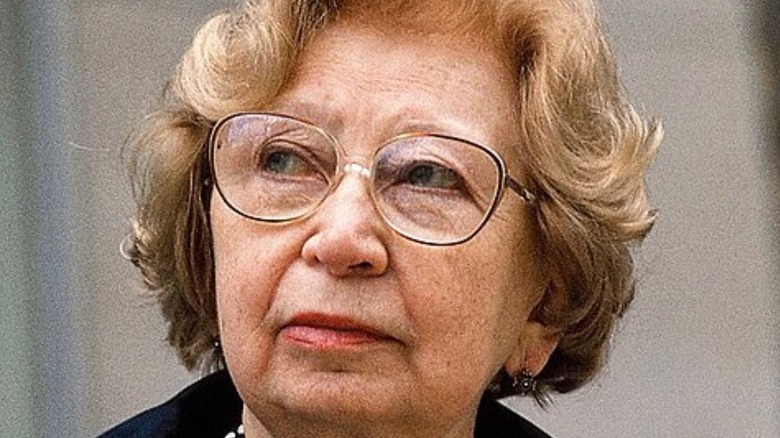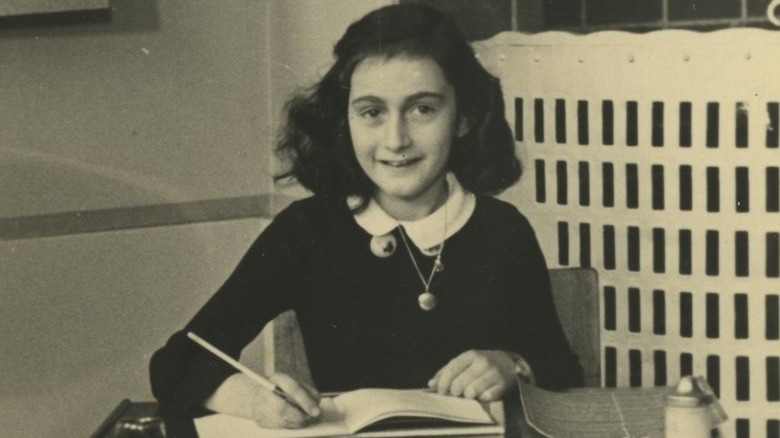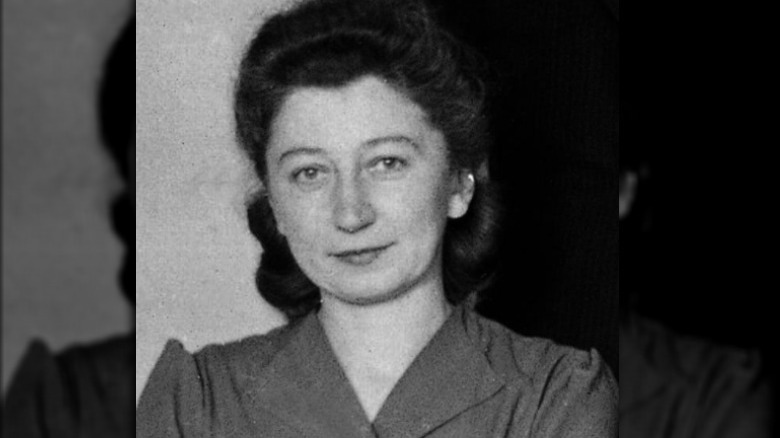The Truth About The Woman Who Saved Anne Frank's Diary
The woman who saved Anne Frank's diary was also the woman who tried to save Anne Frank herself, along with Anne's mother, father and sister, plus four other Dutch Jews hiding from German persecution during World War II. Her name was Miep Gies.
Miep was born in Vienna, Austria in 1909 to Catholic parents. According to the Anne Frank House website, her original name was Hermine Santrouschitz. Throughout her childhood World War I was raging, and by the time she was 11 she had grown so malnourished due to lack of available food that her parents sent her to the Netherlands as part of an ongoing relief project for Austrian Children. There Hermine was taken in by a Dutch family who had the means to help her improve her health and well-being. That family also gave her the nickname "Miep" — according to Behind the Name, the Dutch diminutive form of Maria.
By 1924 Miep's family agreed to let their daughter stay in Amsterdam with her foster family because she was doing so well, per the Anne Frank House. Miep flourished in her new country and in 1933 she started working for Otto Frank, Anne's dad, who had moved with his family from Germany to Holland in hopes of escaping persecution. Over the course of several years she became close with the Frank family, The New York Times reported.
In July 1941 Miep married Jan Gies. Just one year later the newlyweds would be risking their own lives by helping hide the Frank family and others in a secret annex above Otto Frank's office.
Miep Gies did not hesitate to help the Frank Family and others
Otto Frank asked Miep to help his family after making the decision to go into hiding. It was July 1942 and the Nazis had invaded the Netherlands and were taking Dutch Jews to concentration camps. According to both the Anne Frank House and The New York Times, Miep did not hesitate to agree to help the family.
Not only did Miep bring them food daily, along with books and news of the outside world, for the two years and one month the Franks were in hiding she also kept Otto Frank's business going so as to not arouse any suspicions. The company stayed open under the guise of Christian management, per The New York Times.
Miep knew that Anne was keeping a diary during those years of hiding. According to the Anne Frank House, Anne copped a typical middle-schooler attitude once when Miep interrupted her while she was writing. Miep said, "She gave me a look that I will never forget. She looked furious, grim. And then Anne stood up, slammed her diary shut, and looked down her nose at me. 'Yes,' she said, 'and I'm writing about you, too.' I did not know what to say. The only thing I could think of was, 'I'm sure it'll be lovely.'"
Miep Gies saved all of Anne Frank's writings without reading them
On August 4, 1944, Anne and the others in hiding were found and arrested by the Gestapo. To this day it's not known how the Nazis learned of the hiding place, though as National Geographic reported, there are many theories.
Gies got lucky and was not arrested for her part in hiding the Jews because (according to History) the officer who interrogated her was also from Vienna and took sympathy on her. After the arrest Miep went to the police to try to bribe them to free her friends, but it didn't work.
Miep went to the hiding place to try to salvage any personal belongings. According to the Anne Frank House, she found Anne's notebooks and loose paper where she'd been journaling and took the papers and stashed them in a desk drawer — unread, out of respect for Anne's privacy — hoping she could give them back to Anne one day.
However, Anne Frank, her sister, and her mother would all die in concentration camps. Her father, Otto, survived, and when the war was over he came back to live with the Gies.
Miep Gies said she doesn't consider herself a hero
Miep gave Anne's writings to Otto, and he compiled the hopeful prose written in the midst of atrocity for publication into what is today called "Anne Frank: The Diary of a Young Girl." The book has since been translated into nearly 70 languages and has sold more than 30 million copies, per Smithsonian Magazine.
After the war Mies remained in Amsterdam with her husband and raised as son, according to The New York Times. She published a memoir in 1987 titled, "Anne Frank Remembered: The Story of the Woman Who Helped to Hide the Frank Family."
In it, Miep writes, "I am not a hero. I stand at the end of the long, long line of good Dutch people who did what I did and more — much more — during those dark and terrible times years ago, but always like yesterday in the heart of those of us who bear witness. Never a day goes by that I do not think of what happened then."
Miep spent some of her later years traveling to speak to audiences, including children, on what could be learned from the Holocaust. She died at the age of 100 in January 2010 after a short stint in a nursing home following a fall, according to The New York Times.



